(Down - Up - Top - Jazclass Links)
Gnos 2.2 - The A Section
The A section consists of 8 bars, with its first 4 bars ('A1') repeated once at the very end of the piece.
The chord progression features 2-bar Gm segments alternating first with Em (2 bars), then with Ddim (also 2 bars).
Audio 2
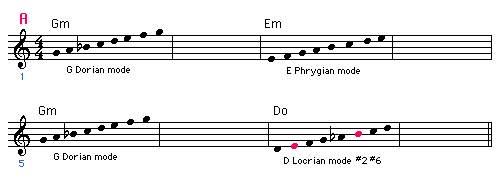
A1 - Bars 1 to 4
Although the Gm chord over the G bass only lasts for 1 beat and is followed by 2 beats of the F major triad, the segment is clearly in G minor. You hear this at once as soon as you play it. The F major chord purely functions to help spell out the G minor mode.
Audio 1
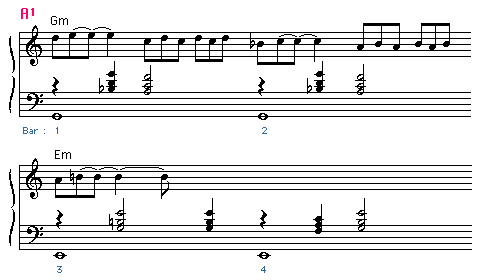
Both the melody line and the two chords over the G bass clearly and unambiguously spell out the G Dorian mode. (If you are not familiar with modes : the G Dorian mode uses the same notes as the F major scale, but the tonic, and therefore focus of the music is centred on G instead of F.)
I therefore suggest you use the G Dorian mode over all Gm sections in this piece.
Audio 3
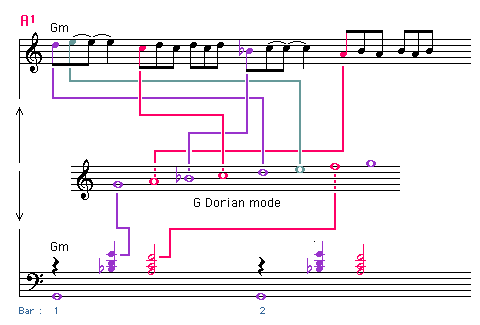
Bars 3 and 4 are underlain by the E bass note. This is combined with an E minor triad in bar 3, then a 1-beat appearance of the F major triad (shown in red below), before returning to E minor.
These two chords combined (E G B and F A C) clearly spell out the E Phrygian mode (Same notes as the C major scale, but with tonic note E). D is the only note not accounted for, but the D sounds in my view better than the D# in this context.
Use therefore the E Phrygian mode over all Em chords in this piece.
Audio 4
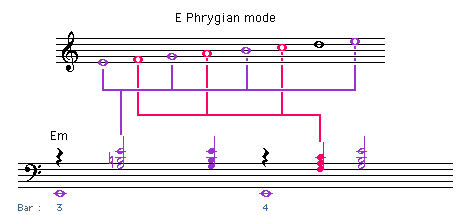
A2 - Bars 5 to 8
In the second half of the A section ('A2') the G minor segment is repeated in bars 5 and 6 exactly as in bars 1 and 2. For improvisation use the G Dorian mode once again over Gmin.
In Bars 7 and 8 the D diminished triad replaces the E minor segment from Bars 3 and 4.
Audio 5
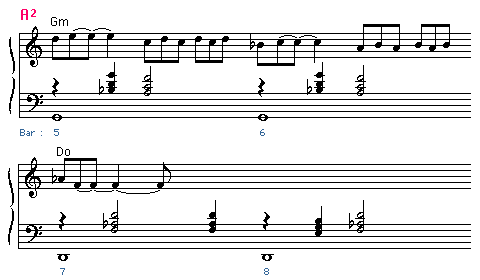
The chords which accompany the D bass notes in bars 7 and 8 are the D diminished triad, with (in bar 8) a short diversion to the E minor triad.
These two chords combined outline an unusual and very interesting scale. For want of a better name I call it the D Locrian sharp 2 sharp 6.
Audio 6

Does this scale look familiar to you ?
Interestingly it consists of the same notes as the scale Satie features in the C section of Gnossienne 1. It is the F melodic minor #4 scale.
F melodic minor #4
D Locrian #2 #6 |
F G Ab B C D E F
D E F G Ab B C D
|
Bar 8 is the only place in this piece where this unusual scale occurs. You can use it here or use the more common D scale over Ddim (D Locrian #2) as outlined in the